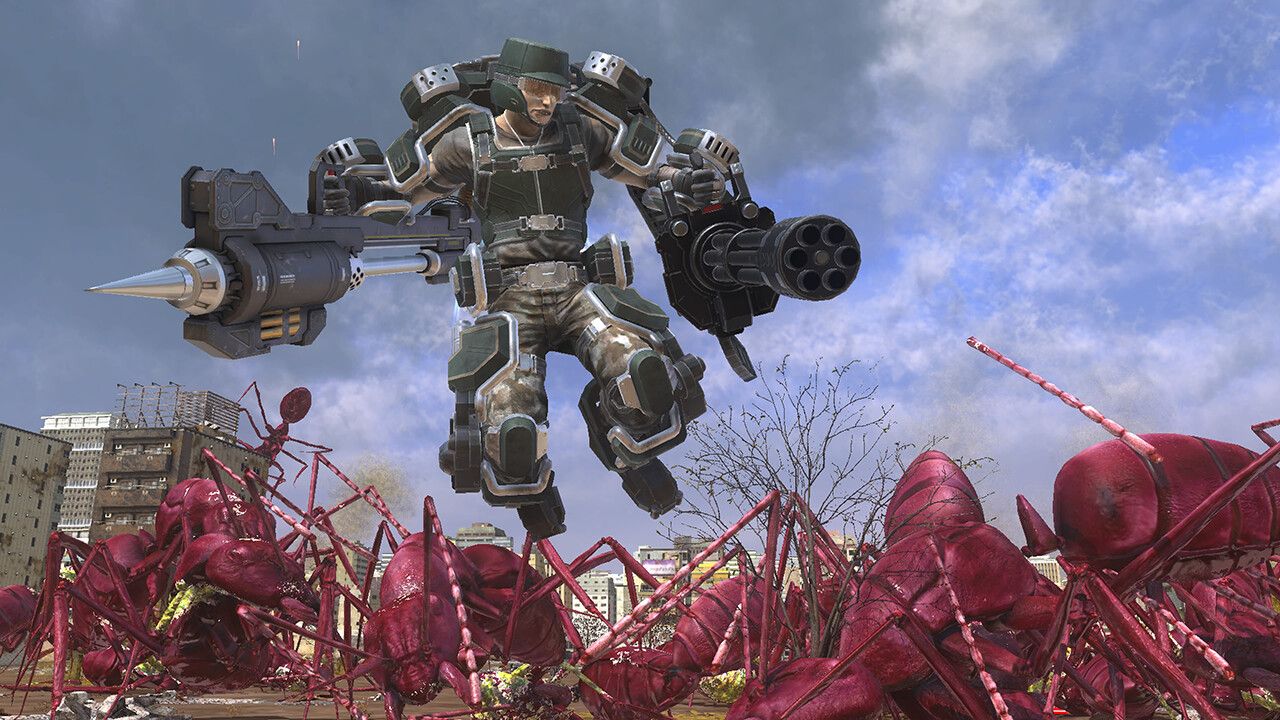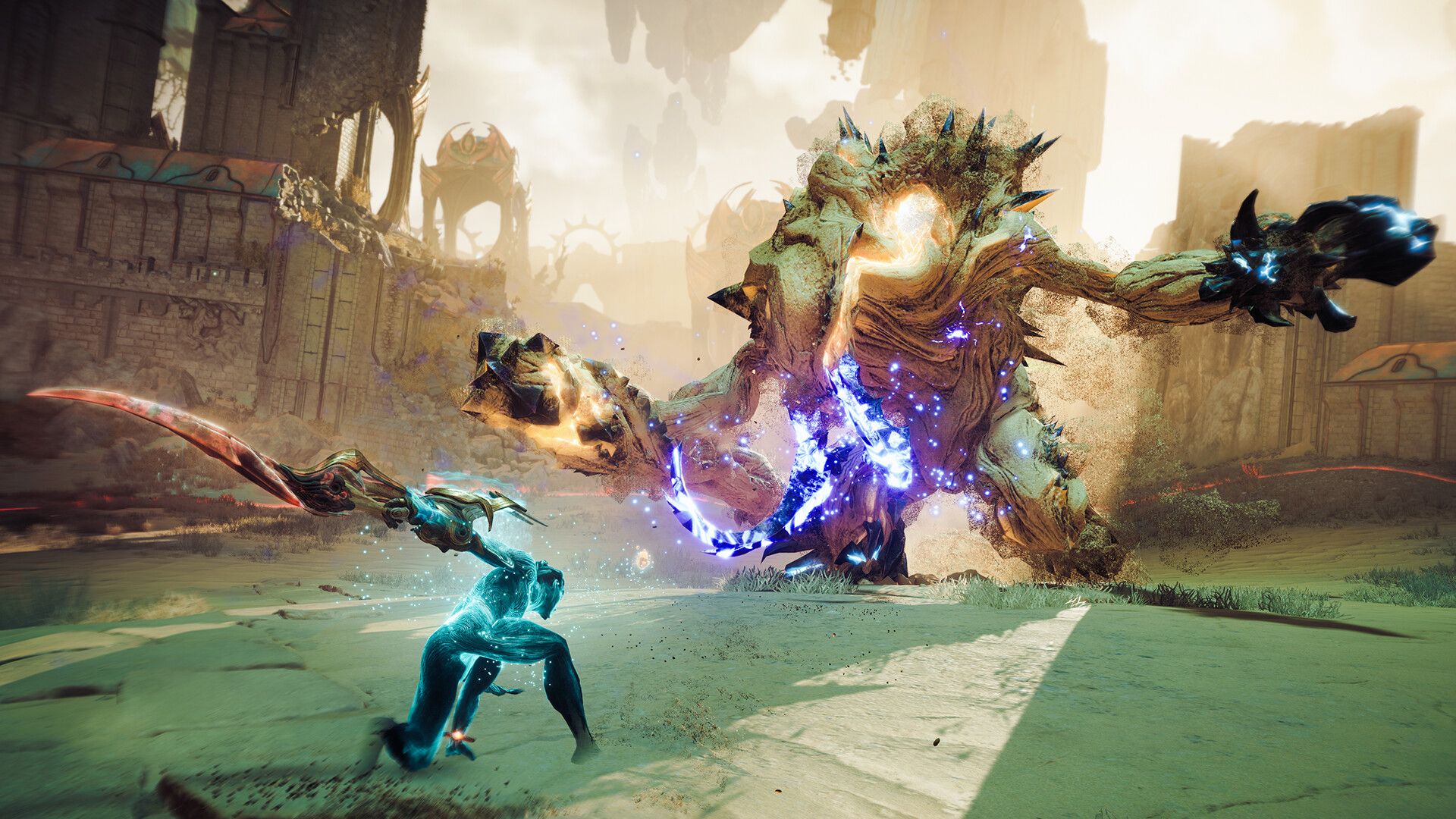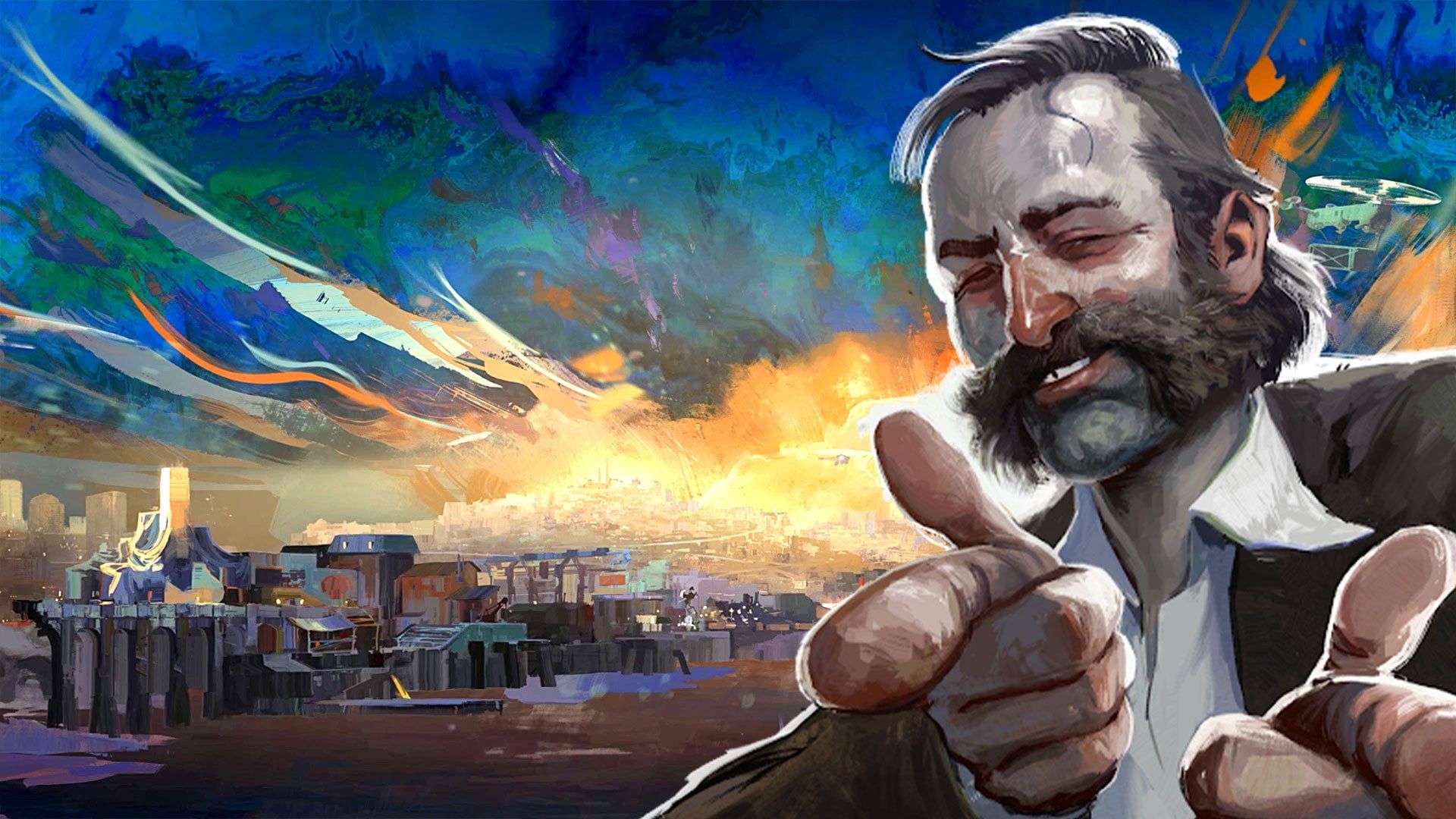Summary
- AA games are mid-market titles created with moderate budgets, some of which rival AAA games in quality.
- Although they often struggle to attract players, AA games offer unique gameplay experiences worth exploring.
- AA games have preserved dying genres, revived old franchises, and showcased the talents of lesser-known teams.
You’re probably familiar with games created by big-budget developers or small indie studios, but there is another category of game that’s easy to overlook. In fact, AA (double-A) developers are likely responsible for some of your favorite games.
What Are AA Games?
Double-A games are mid-market video games developed on small or moderately-sized budgets. These games are typically created by studios that aren’t as large as AAA (triple-A) developers like Rockstar Games or Ubisoft, but have more staff and funding than smaller indie teams.
Double-A games often occupy the same spaces as triple-A titles, with many double-A games belonging to popular genres like first-person shooters, role-playing games, survival-horror games, and narrative-driven adventure games.
The budgets for double-A games can greatly vary, with many lower-budget games like Earth Defense Force 6 and Palworld lacking the polish and graphical fidelity of triple-A titles. Meanwhile, higher-end productions such as Senua’s Saga: Hellblade 2, RoboCop: Rogue City, and Kena: Bridge of Spirits rival many recent big-budget releases in both visuals and performance.
Double-A games can greatly differ in their budgets and quality, and that’s partly due to the involvement of triple-A companies in certain releases. While many double-A studios self-publish their games, some mid-market games are partially funded and published by major companies.
Dontnod’s Life is Strange series and Platinum Games’ Nier Automata were both published by Square Enix. Similarly, Electronic Arts has published numerous double-A games under its EA Originals label, which specializes in funding games developed by independent studios.
In rare cases, triple-A studios have developed their own double-A games, with recent examples including Ubisoft’s Prince of Persia: The Lost Crown, Capcom’s Kunitsu-Gami: Path of the Goddess, and Square Enix’s SaGa: Emerald Beyond. These games are considered “double-A” since they’re made on considerably smaller budgets and with fewer developers than most other works from the same studios.
Why AA Games Are Often Forgotten
Many double-A games struggle to stand out from the constant wave of highly-anticipated installments in triple-A franchises and eye-catching experimental indie projects. Part of this problem is a result of double-A games having lower marketing budgets compared to triple-A productions, so it shouldn’t come as a surprise that they don’t sell as well as the latest Call of Duty or Assassin’s Creed games. However, this is only the tip of the iceberg for the biggest challenge that double-A games face.
Despite their small teams and limited budgets, double-A games will always be held to the same standard as their triple-A competitors. Whereas many indie games are judged on their own merits due to their unique gameplay concepts, creative visuals, and—most importantly—low price tag, double-A developers often aim for the same goals as triple-A publishers.
Plenty of double-A studios try to copy higher-budget hits through games that feature photorealistic graphics, large-open worlds, and other popular gaming trends. Unfortunately, many of these attempts to replicate triple-A experiences suffer from technical issues, unrealized potential, and large swathes of cut content.
That isn’t to say these double-A games aren’t worth playing, and efforts to imitate triple-A developers have inspired flawed gems like Deadly Premonition, Kingdom Come: Deliverance, and the cult-classic S.T.A.L.K.E.R. series. However, when you place these games next to their triple-A competitors, most consumers will likely pick out the popular, big-budget releases over lesser-known double-A titles.
Even double-A games that do everything right are often overshadowed by bigger releases. Immortals of Aveum and Atlas Fallen both received positive reviews for their imaginative settings and unique combat but were unsurprisingly met with disappointing sales after releasing in the same month as two highly-anticipated triple-A sequels: Baldur’s Gate 3 and Armored Core VI: Fires of Rubicon.
While indie games and triple-A studios have only grown in popularity, double-A games are stuck in an unfortunate position. Most double-A games are too niche to appeal to mainstream audiences, yet struggle to stand out from other games. Combined with their lack of marketing and low-budget production that may turn away some players, it’s no surprise that countless double-A studios are still struggling to reach a wider audience.
Don’t Miss Out on AA Games
Despite all the challenges associated with double-A games, their low budgets allow them to experiment with ideas that would be too risky for most triple-A developers and too ambitious for a small indie team.
Double-A games have featured some of the most inventive gameplay and video game storytelling in recent history. Hi-Fi Rush is a visually stunning blend of rhythm games and action games, with combat revolving around bashing enemies to the beat of its genre-hopping soundtrack.
Another outstanding double-A action game is Sifu: a 3D beat-em-up inspired by classic martial arts films. Sifu features brutally challenging brawls and a uniquely punishing limited-lives mechanic in which each death causes your character to grow older, altering your stats and available moveset.
Along with unique ideas, many double-A games are designed for fans of niche genres. The murder-mystery genre is almost entirely composed of double-A series such as Capcom’s Ace Attorney, Frogwares’ Adventures of Sherlock Holmes, and Spike Chunsoft’s Danganronpa. But the most notable entry in the genre is ZA/UM’s Disco Elysium, though just calling it a “mystery game” would be underselling it.
Disco Elysium is more accurately described as a role-playing game, placing you in the role of an amnesiac detective whose thoughts are dominated by voices in his head, each one representing different ideologies and personality traits. Instead of interacting with the world through combat, most of Disco Elysium plays out through dialogue, with your internal voices serving as “skills” that can be upgraded to access different choices in conversations. Disco Elysium is a must-play for any fan of story-driven games, and its outstanding writing along with the incredibly deep dialogue system highlight the underappreciated creative potential of double-A games.
Double-A games have also preserved dying genres and invented entirely new ones. Rebellion’s Sniper Elite series has kept stealth-action games alive since the Metal Gear and Splinter Cell series went dormant. Amnesia: The Dark Descent similarly preserved the spirit of classic survival horror games during a time when most iconic horror franchises were prioritizing action set-pieces over proper scares. The game’s complete lack of combat and terrifying first-person perspective redefined the survival horror genre—even inspiring later installments in the Resident Evil and Silent Hill series.
It’s easy to forget that many triple-A studios started out as double-A developers, with one of the most influential examples being FromSoftware. If that name seems familiar to you, it’s likely because it belongs to the creators of the Soulsborne series.
Both the original Dark Souls and its spiritual predecessor—Demon’s Souls—are technically double-A games, and that shows in their lower production value and the noticeable lack of polish compared to the studio’s later works. Despite their flaws, these hardcore action RPGs had a monumental impact on the gaming industry by cementing the Soulslike genre and launching FromSoftware into an iconic triple-A powerhouse.
The low-risk nature of double-A games has also been used to officially revive old franchises. Sequels like Nier: Automata, SaGa: Scarlet Grace, and Prince of Persia: The Lost Crown brought back beloved series while introducing new ideas and much-needed improvements to their respective franchises.
However, double-A games don’t always need to bring some revolutionary concept or target a niche audience to find success. Many times, double-A games provide a way for lesser-known teams to demonstrate their talents. Recent successes like Helldivers 2, Lies of P, and Hades II prove that double-A games are capable of surpassing their big-budget competitors in any genre.
Double-A developers have a long history of genre-defining releases, and they’ve only gotten better over the years. If you’re interested in finally getting around to the mid-market games you might have ignored, now’s the time.
Services like Game Pass and PlayStation Plus Premium provide access to numerous worthwhile double-A games, including numerous recent releases. Additionally, double-A games rarely stay at full price for long, meaning it’s never too late to give them a chance.







